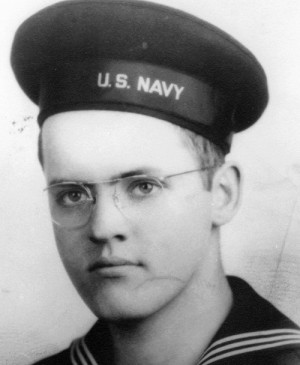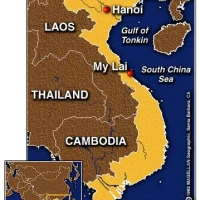
WE DIDN’T START THE FIRE
FROM A TO Z
On September 27, 1989, the iconic song by Billy Joel, We Didn’t Start the Fire hit the airwaves. It was a history lesson set to music. When you first heard the song, did you know or remember all the people places, things and events mentioned in the lyrics? I sure didn’t. Back in 1989 before the internet was something everyone had access to, my boyfriend (now husband) and I headed to the local public library and looked up all the historical references. This month, for the A to Z Challenge, I am writing about that history.
We didn’t start the fire
It was always burning
Since the world’s been turning
We didn’t start the fire
No we didn’t light it
But we tried to fight it
In the 1956 segment of Billy Joel’s song, he mentions Alabama. We know its a state in the southern part of the United States but what is the significance of it in 1956? It could only be the Montgomery bus boycott, one of the most important events in the Civil Rights Movement. This political and social protest campaign against the policy of racial segregation on the public transit system of Montgomery, Alabama lasted from December 5, 1955 with the arrest of Rosa Parks, an African American woman, who refused to surrender her seat to a white person until December 20, 1956, when a federal ruling, Browder v. Gayle, took effect, and led to a United States Supreme Court decision that declared the Alabama and Montgomery laws requiring segregated buses to be unconstitutional. Many important figures in the Civil Rights Movement took part in the boycott, including Reverend Martin Luther King Jr. and Ralph Abernathy.

Alabama is the site of the Montgomery Bus Boycott which ultimately led to the removal of the last race laws in the USA. Rosa Parks and Martin Luther King, Jr figure prominently.

Rosa Parks on a Montgomery bus on December 21, 1956, the day Montgomery’s public transportation system was legally integrated. Behind Parks is Nicholas C. Chriss, a UPI reporter covering the event.
The 1979 lyrics state, Ayatollah’s in Iran. On February 1, 1979, the Ayatollah Khomeini returns to Iran in triumph after 15 years of exile. The shah and his family had fled the country two weeks before, and jubilant Iranian revolutionaries were eager to establish a fundamentalist Islamic government under Khomeini’s leadership. Khomeini arrived in Tehran in triumph on February 1, 1979, and was acclaimed as the leader of the Iranian Revolution. With religious fervor running high, he consolidated his authority and set out to transform Iran into a religious state. Of course we know that during the Carter Administration, the US suffered the Iran Hostage situation. On November 4, 1979, the 15th anniversary of Khomeini’s exile, students stormed the U.S. embassy in Tehran and took the staff hostage. With Khomeini’s approval, the radicals demanded the return of the shah to Iran and held 52 Americans hostage for 444 days. The shah died in Egypt of cancer in July 1980.

Ayatollah’s in Iran: During the Iranian Revolution of 1979, the West-backed and secular Shah is overthrown as the Ayatollah Ruhollah Khomeini gains power after years in exile and forces Islamic law.
In May 1983, doctors from Dr. Luc Montagnier’s team at the Pasteur Institute in France reported that they had isolated a new retrovirus from lymphoid ganglions that they believed was the cause of AIDS. The virus was later named lymphadenopathy-associated virus (LAV) and a sample was sent to the U.S. Centers for Disease Control, which was later passed to the National Cancer Institute (NCI). The AIDS epidemic officially began on June 5, 1981, when the U.S. Centers for Disease Control and Prevention in its Morbidity and Mortality Weekly Report newsletter reported unusual clusters of Pneumocystis pneumonia (PCP) caused by a form of Pneumocystis carinii (now recognized as a distinct species Pneumocystis jirovecii) in five homosexual men in Los Angeles. Over the next 18 months, more PCP clusters were discovered among otherwise healthy men in cities throughout the country, along with other opportunistic diseases (such as Kaposi’s sarcoma and persistent, generalized lymphadenopathy), common in immunosuppressed patients. In June 1982, a report of a group of cases amongst gay men in Southern California suggested that a sexually transmitted infectious agent might be the etiological agent, and the syndrome was initially termed “GRID”, or gay-related immune deficiency. Health authorities soon realized that nearly half of the people identified with the syndrome were not homosexual men. The same opportunistic infections were also reported among hemophiliacs, users of intravenous drugs such as heroin, and Haitian immigrants – leading some researchers to call it the “4H” disease. By August 1982, the disease was being referred to by its new CDC-coined name: Acquired Immune Deficiency Syndrome (AIDS).

AIDS: A collection of symptoms and infections in humans resulting from the specific damage to the immune system caused by infection with the human immunodeficiency virus (HIV). It is first detected and recognized in the 1980s, and was on its way to becoming a pandemic.





 Check out my other blog
Check out my other blog I'M PUBLISHED
I'M PUBLISHED I'm Published Again
I'm Published Again









A great start for the A to Z. I have read about the brave Rosa Parks who lived a long life and saw so many changes. I remember the Iran hostage crisis so well and the Canadian Ambassador actually visited our school. I was in awe. I also remember when AIDS came into the forefront and how much fear dictated how people. Dealt with the people who suffered with it. I actually think Rock Hudson and Princess Diana helped people gain a better understanding of it.
LikeLike
Some of the biggest stories of their decade. Billy Joel used all the hot ones in this diddy
LikeLiked by 1 person
What a neat theme! I look forward to seeing more posts during the month!
Sharon E. Cathcart
Award-winning Author of Fiction Featuring Atypical Characters
#atozchallenge
LikeLike
Thanks.
LikeLike
You did a real good job here. I’m looking forward to the rest!
LikeLike
Thanks
LikeLike
Great historical summary over a song – I never knew about this, thank you for sharing.
LikeLike
I remember breaking down all the historical bits and pieces of this song to be a big thing back in high school. Billy Joel wrote this for his fortieth birthday which seemed – old. Now I’m older than that and could probably write my own song.
LikeLike
Couldn’t we all. Thanks for reading
LikeLiked by 1 person
I remember it all – Especially the Aids – I worked in San Francisco in the mid to late 70’s and many of my friends were dying. Terrible time.
My theme this year, is about Baby boomers and the baby boom years we grew up in. Grab some cookies and milk, and come on over. Atomic Bombs
LikeLike
Looking forward to checking it out. Dedicating some of Sunday to read a lot of the first day. Thanks for reading and sorry about your friends.
LikeLiked by 1 person
A true history flashback!
Perspectives at Life & Faith in Caneyhead
LikeLike
When I stopped into that bus that Rosa Parks sat in (now in the Henry Ford Museum in Dearborn, MI), I got goose bumps and started to cry. Just knowing what happened in our history gave me much to think about. Looking forward to your posts.
Denise at My Life in Retirement Atlantic Wall
LikeLike
Thanks
LikeLike
I recall being riveted by the Iran hostage situation. That’s when I started paying far more attention to world events than I previously had been doing.
Arlee Bird
Tossing It Out
LikeLike
Me too. You couldn’t help but be aware with the constant visuals on TV
LikeLike